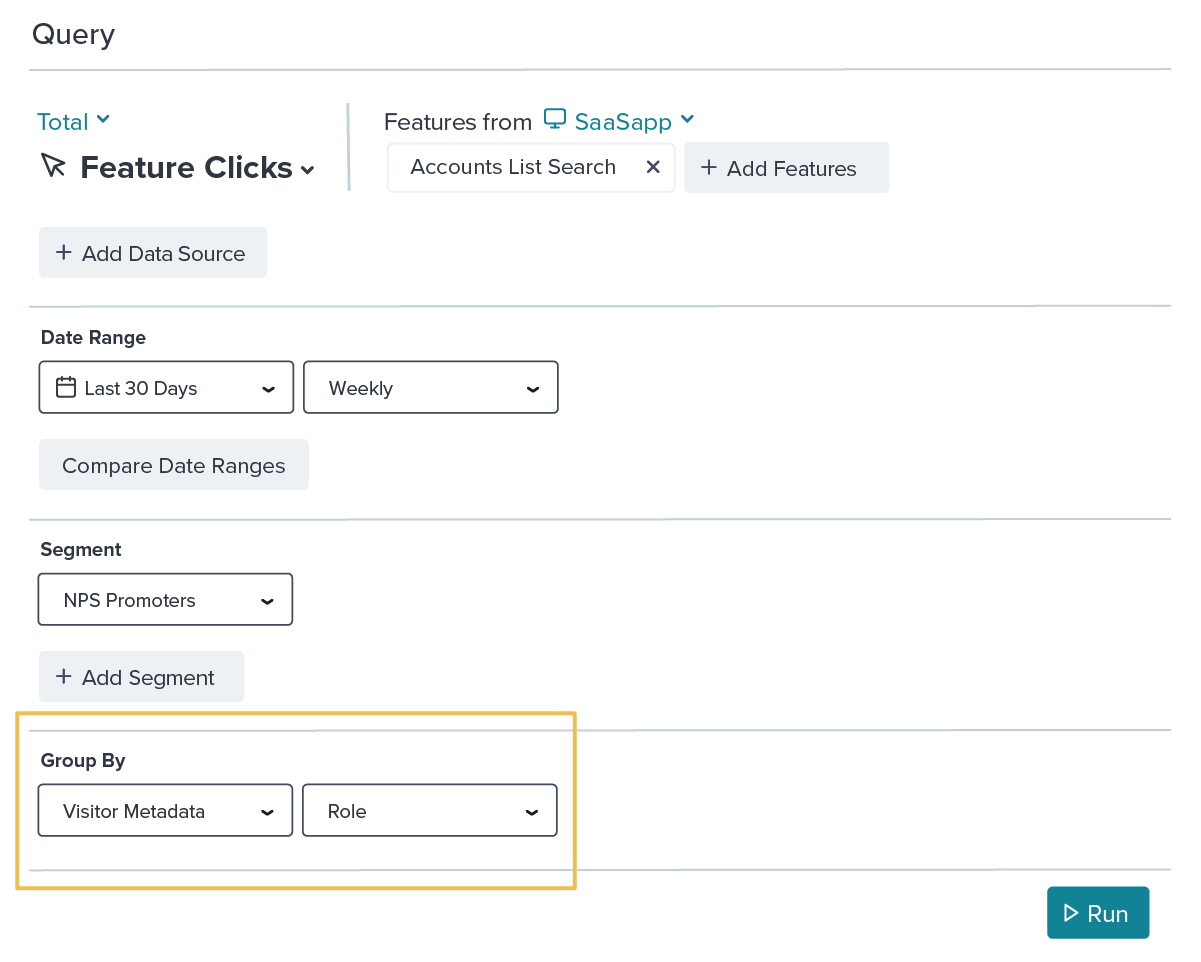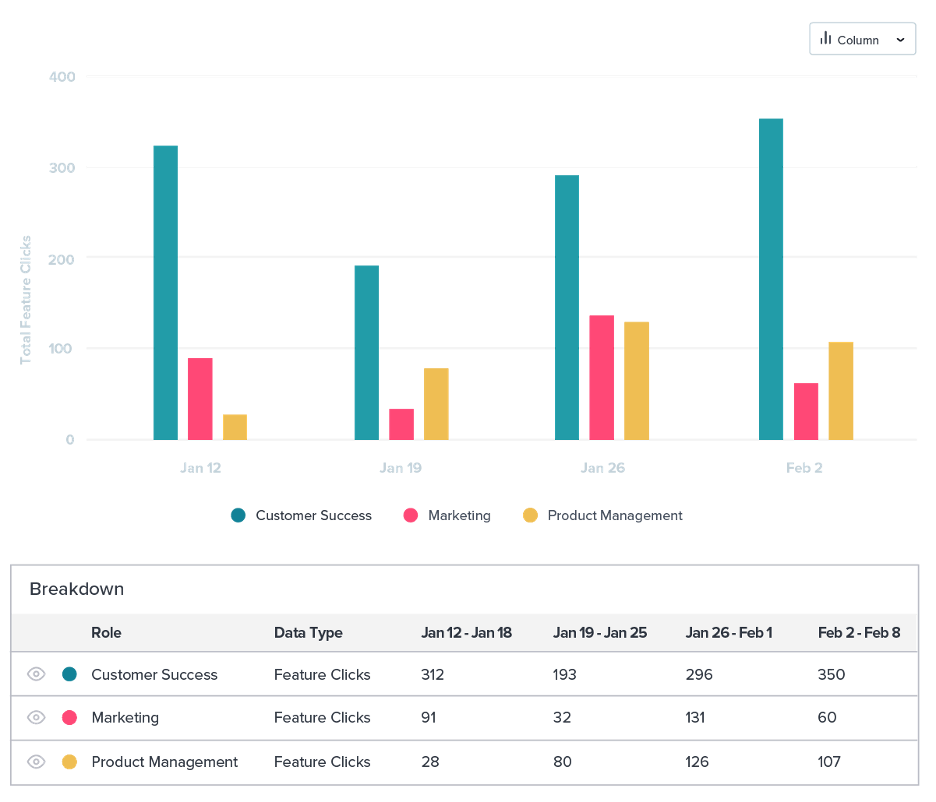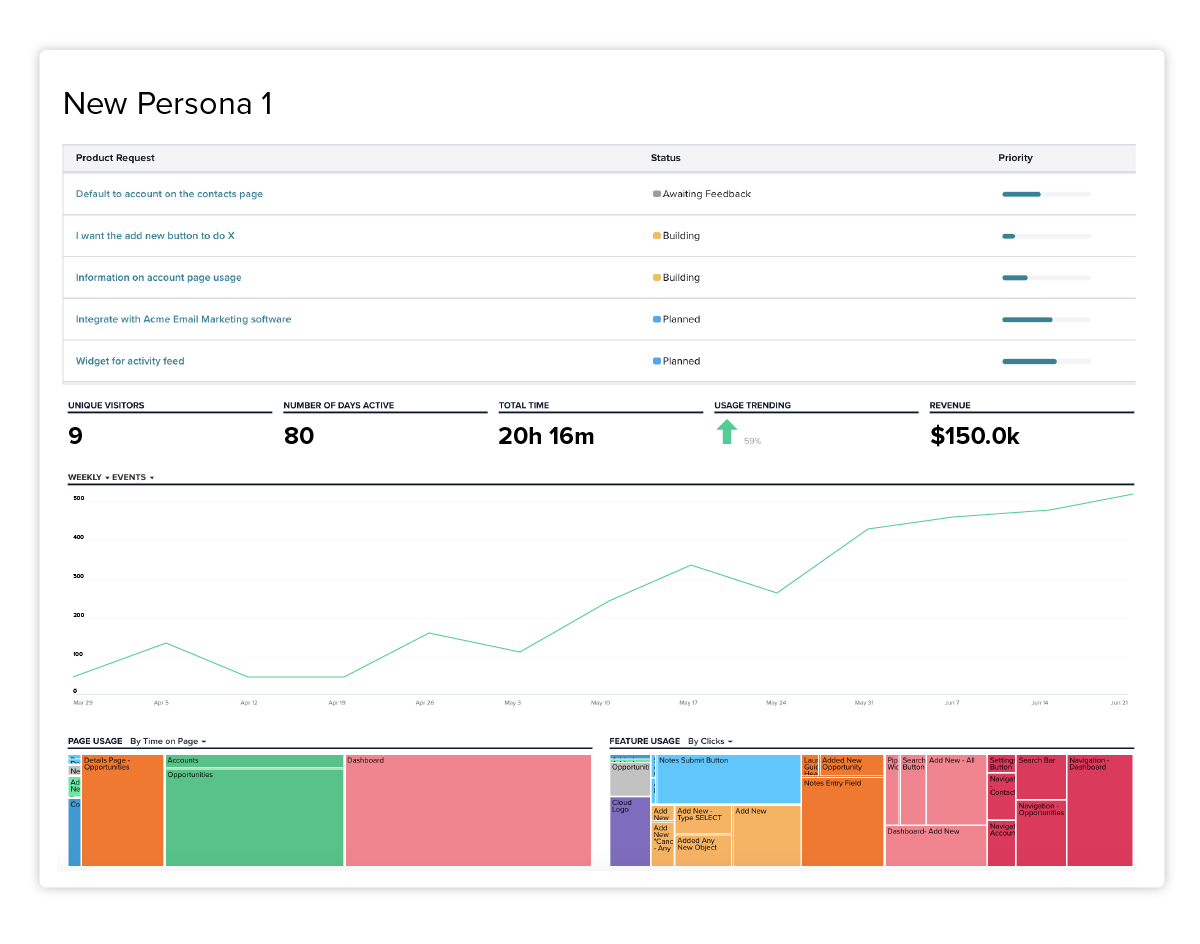If you’re experiencing higher levels of product usage, it’s important to understand who those users are. Do they use the product differently than your existing users? Are they an entirely different type of user?
Chances are, if a new persona begins using your product, they’re going to have their own unique needs and use case for accessing the application. You need to not only understand who these users are and how they use the product, but then tailor their product experience to meet their needs. Are they leveraging the features and functionality that are most useful for them?
Here are some key steps to ensuring a new persona gets the most out of your product, and stays engaged for the long run:
Step 1: Identify the new persona and analyze usage
First, you need to identify whether or not you have a new persona in your user base in the first place. The best way to learn more about your users? Ask them directly. If your product allows it, create a poll that asks users what their role is and serve it to them during their initial onboarding or welcome flow. You can also use additional contextual clues from the rest of your tech stack. For example, connecting your product analytics system with your CRM could give you additional information on whether a different industry or trial user is beginning to use your product more than usual.
Once you have this information and tracking in place, you can pull product usage reports based on user role and industry to better understand if (and how) a new type of user is now accessing your product.

Use these reports to dig into which features new users are gravitating toward. Do their usage patterns look different than your typical user? Are they leveraging the features you think will be valuable to them, based on their role or industry vertical? By tracking how these users navigate the application differently from your existing user base, you can identify opportunities to provide a better product experience.

Pro tip: look at the ARR associated with these accounts to prioritize which are the most valuable to target.
Step 2: Drive long-term engagement
Once you’ve identified a new persona using your product, you need to ensure their experience is positive right from the start. One of the best tactics for engaging new users effectively is to reach them while they’re using your product. For example, it might be useful to walk them through a quick product tour or highlight the key areas of the application that are most relevant to them.
In building your in-app engagement strategy for these users, you need to understand as much about them as you can. Here are some questions to consider:
- What is their goal? In other words, what pain does your product help eliminate or ease? This should inform which features and functionality you choose to highlight to these users.
- What is their technical proficiency? Knowing this will help you decide the level of product detail to include in your initial communications.
- What format do they prefer? Everyone has different preferences when it comes to consuming information. Think about how you can deliver in-app messages in the right ways — for example using GIFs or video tutorials instead of just written content. This will also depend on whether you’re providing more high level or tactical information.
Think about how you can deliver hyper-targeted communications by segmenting your in-app messages. Similar to step one, you can serve guides based on role or a segment based on information in your CRM (e.g. industry or free trial end date). This is a great opportunity to highlight the functionality that can directly impact these users’ success, based on the information you know about them.
Step 3: Surface the data to relevant cross-functional partners
Lastly, make sure any data you collect about this new persona is easily available to other teams across the organization. This information is important for the customer teams to know which customers need more attention, and might even inform your marketing team’s go-to-market strategy.

One way to arm stakeholders with up-to-date information is to create shared dashboards showing usage trends, features requests, tickets, and other key data points (plus baselines to put those numbers in context) for each new persona. This way, the data is accessible at any time and other teams can use it to bolster outreach strategies, renewal efforts, and product improvements related to this new persona.


